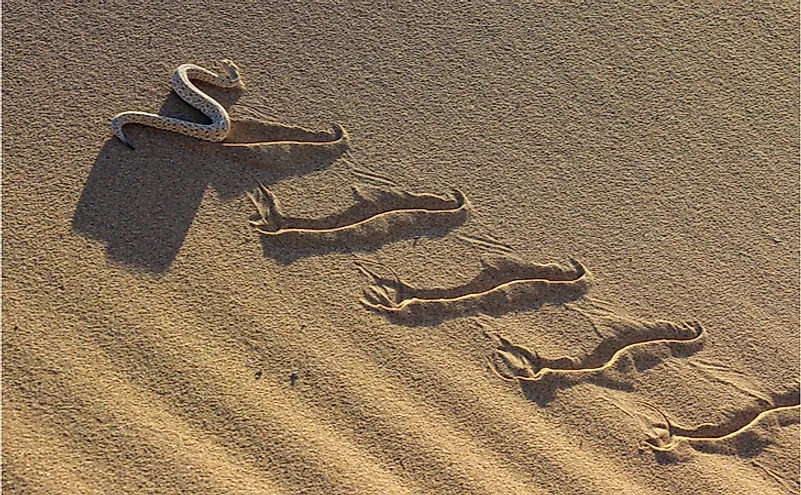How Do Snakes Move?

The popularly known method of movement by snakes is the s-shaped movement. However, snakes have other unique skills of moving around other than the frequent s-shaped movement. Snakes also can crawl in a straight line. When a snake moves forward, the skin on the underbelly flexes relatively more compared to the skin over the back and its ribcage. The scales on the snake’s belly act more like treads on a tire, giving traction with the ground, while the muscles pull forward the internal skeleton in an undulating manner, and it does this seamlessly in a fluid manner. Snakes have numerous intriguing ways of controlling the muscles, and this enables them to go almost anywhere. There are four basic movements that snakes use to move around.
Serpentine Movement
The serpentine movement is also known as lateral undulation, and it is the most common movement in most species of snakes found in both aquatic and terrestrial habitats. With this type of movement, the snake moves in a wavy S-shaped pattern. To achieve this type of movement, the snake contracts the muscles beginning from the head and moves the body from side to side to create a series of curves. This movement will push obstacles such as rocks, roots, or tree branches to create resistance and push the snake forward. However, this movement is not the most efficient on slippery surfaces because it lacks contacts and points required to push the snake forward.
Caterpillar Or Rectilinear Movement
The caterpillar movement is also referred to as a rectilinear movement, and it is a slow straight forward movement. In this type of movement, the snake utilizes its wide central scales on the underbelly to grip the ground while at the same time using other scales to push itself forward. This movement is similar to the s-shaped, but instead of moving the body from side to side, the snake moves up and down. The snake moves in the same manner as a caterpillar. This type of movement is used mostly by the large type of snakes, such as the green anaconda.
Sidewinding Movement
Sidewinding movement is used by snakes in areas where there are no resistance points. This movement is seen on snakes living in slippery or areas with loose sand. It is a modification of the serpentine movement where the snake bends its body into waves so that the body is lifted and a few points being in touch with the ground. The movement allows snakes such as rattlesnakes to move over hot sand or climb the sand dunes
Concertina Movement
Concertina movement is used by a snake where it anchors parts of its body while at the same time pushing or pulling other parts of the body in the direction of the movement. The movement allows parts of the body of the snake to go through an alternating movement of static and contact. This type of movement is used by snakes when they are moving in a tight space or climbing trees.
The World's Fastest Snake
The black mamba of Africa is the world's fastest snake. It can move at a speed of between 4.32 and 5.4 meters per second, which translates to about 10 to 12 miles per hour.
Learn some more interesting facts about the black mamba in this article.











